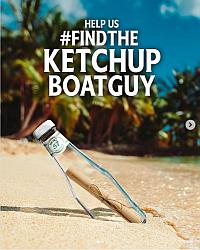A lone scientist on the coast of the Siberian Arctic finds that warming seas have taken a toll on the walrus migration, as documented in a film by Evgenia Arbugaeva and Maxim Arbugaev. “Haulout” is nominated for Best Documentary Short at the 2023 Academy Awards.
 In honor of both Women’s History Month and Black History Month, an updated repost about Gladys West.
In honor of both Women’s History Month and Black History Month, an updated repost about Gladys West.
From maps to apps to chartplotters, we all rely on GPS these days, sometimes whether we realize it or not. Ethan Siegel wrote in Forbes: Unbeknownst to most people, however, the science underlying this technology was primarily developed by two people: Albert Einstein, whose theories of special and general relativity both play an important role, and Gladys West, a still-living and largely unheralded Black woman whose scientific contributions enabled us to understand geodesy and the shape of the Earth well enough to make GPS technology possible.
Now, we all know who Albert Einstien was. Gladys West, perhaps not so much. In honor of Black History Month, here is an updated repost about the Black female mathematician whose work for the Navy made a major contribution to the development of the Global Positioning System.
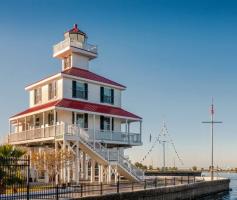
New Canal Lighthouse
We recently posted about Kate Walker, the lighthouse keeper of the Robbins Reef Light in New York harbor for close to 35 years. Kate took over as keeper when her husband died of pneumonia in 1886. Oddly enough, in the 1800s, when women weren’t allowed to vote or own property, they could become lighthouse keepers.
Curbed New Orleans has posted an article about the female lighthouse keepers of the New Canal Lighthouse, on Lake Pontchartrain in New Orleans, LA. They quote Lake Pontchartrain Basin Foundation Education Center director Chris Cook, who said, “Across the country, it wasn’t unusual for the man to die and the wife to take over. It is unusual that it happened so many times in the New Orleans area.”
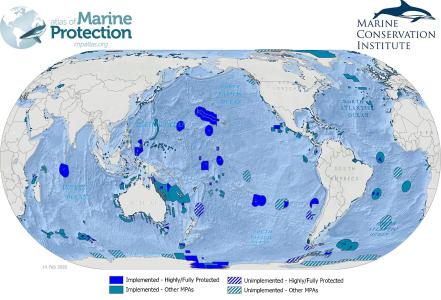
Marine protected areas as of 2020 (data from MPAtlas)
CNN reports that nearly 200 countries have agreed to a legally-binding High Seas Treaty to protect marine life in international waters, which cover around half of the planet’s surface, but have long been essentially lawless.
The agreement was signed on March 4 after two weeks of negotiations at the United Nations headquarters in New York ended in a mammoth final session of more than 36 hours – but it has been two decades in the making.

In 1886, lighthouse keeper John Walker’s last words to his wife Kate as he died died from pneumonia, were “Mind the light, Kate.” Kate, then 38 with two teenage children, took his final wish to heart. She minded the light — from that day on, every single day, for more than three decades.
Though standing only 4’10” tall and weighing around 100 pounds, Katherine Walker served as the keeper of the Robbins Reef Lighthouse for 35 years, following the death of her husband. In addition to the arduous task of keeping the light burning, she also rowed across the choppy waters of Upper New York harbor, a mile each way, to take her two children to school on Staten Island, weather permitting.
An immigrant from Germany, Kate met and married John Walker, who in 1883 was appointed keeper of the Robbins Reef Lighthouse. Kate found herself living on a reef inhabited solely by harbor seals. (Robbins Reef comes from the early Dutch name, “Robyns Rift,” or Seal Rocks.)
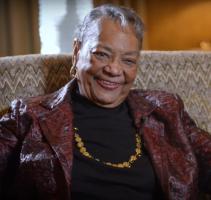 In honor of both March’s Women’s History Month & February’s Black History Month, an updated repost about the barrier-shattering naval engineer Raye Montague, who died at the age of 83 in 2018.
In honor of both March’s Women’s History Month & February’s Black History Month, an updated repost about the barrier-shattering naval engineer Raye Montague, who died at the age of 83 in 2018.
At the age of 7, she was inspired to become an engineer after she toured a captured World War II German submarine with her grandmother. As an African-American girl, however, she was told that becoming an engineer was simply not an option.
Thirty years later, Raye Montague became the first person to use a computer program to rapidly develop a preliminary ship design for the US Navy. The design process had previously taken the Navy two years. Montague completed the preliminary design of the Oliver Hazard Perry Class frigate in less than 19 hours. Her accomplishment revolutionized the way the Navy designs ships and submarines.
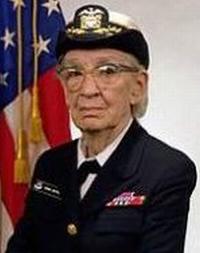 During Women’s History Month, it is good to remember and to honor Admiral Grace Hopper. Grace Hopper was a pioneering computer scientist and a United States Navy Rear Admiral. Hopper received a master’s degree and a Ph.D. in mathematics from Yale. She was nicknamed “Amazing Grace” and is often referred to as the “mother of computing.”
During Women’s History Month, it is good to remember and to honor Admiral Grace Hopper. Grace Hopper was a pioneering computer scientist and a United States Navy Rear Admiral. Hopper received a master’s degree and a Ph.D. in mathematics from Yale. She was nicknamed “Amazing Grace” and is often referred to as the “mother of computing.”
In October of 2020, the U.S. Naval Academy officially opened Hopper Hall, the academy’s new center for cybersecurity studies, named in her honor. The cybersecurity facility is the first building named after a woman at the three main service academies.
 I was stunned and saddened to read that shanty singer and folklorist Frank Woerner has died. I haven’t seen an obituary yet, but I came across a Facebook post by Alison Kelley who wrote, “It is with great shock and sorrow that my dear friend and folk father Frank Woerner has passed away suddenly.”
I was stunned and saddened to read that shanty singer and folklorist Frank Woerner has died. I haven’t seen an obituary yet, but I came across a Facebook post by Alison Kelley who wrote, “It is with great shock and sorrow that my dear friend and folk father Frank Woerner has passed away suddenly.”
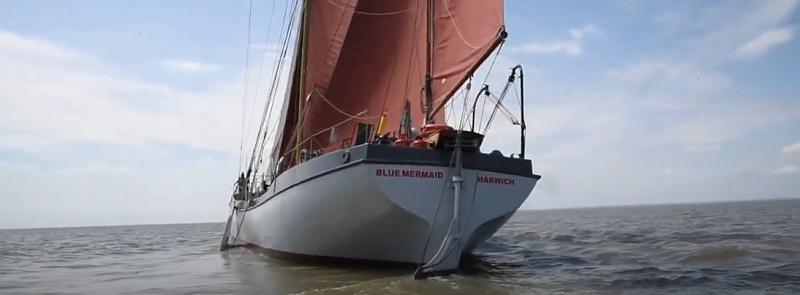 In 2019, we posted about Blue Mermaid, the first sailing barge built for trade in Britain since 1930. Recently, the Maritime and Coastguard Agency has granted permission to the Sea-Change Sailing Trust, which owns the Blue Mermaid, for the barge to carry cargoes of up to 110 tonnes, between Lowestoft and Sandwich – and up the Thames. Blue Mermaid is also the first UK-registered sailing vessel to be authorized as a commercial cargo carrier since the 1970s.
In 2019, we posted about Blue Mermaid, the first sailing barge built for trade in Britain since 1930. Recently, the Maritime and Coastguard Agency has granted permission to the Sea-Change Sailing Trust, which owns the Blue Mermaid, for the barge to carry cargoes of up to 110 tonnes, between Lowestoft and Sandwich – and up the Thames. Blue Mermaid is also the first UK-registered sailing vessel to be authorized as a commercial cargo carrier since the 1970s.
The sailing ship trust, which provides training and education for young people and vulnerable adults is working with Brightlingsea-based Essex Cement to carry cargo within its authorized range.
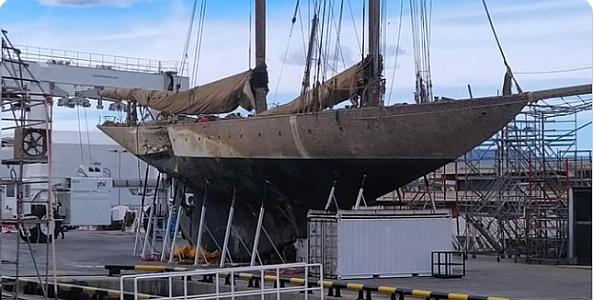 Sad news. The Eleonora E is being scrapped.
Sad news. The Eleonora E is being scrapped.
Last June, we posted that the classic 49m schooner was struck by a 60m long search and rescue vessel in Port Tárraco, Tarragona, Spain, and subsequently sank. The search and rescue vessel Punta Mayor was maneuvering in the harbor and became stuck in reverse. The vessel struck Eleonora E at midships on the starboard side, crushing the schooner against a seawall.
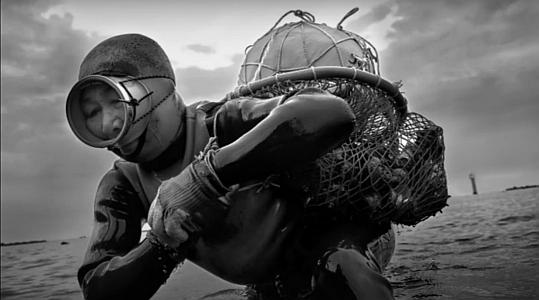 On the first day of Women’s History month, something a bit different.
On the first day of Women’s History month, something a bit different.
Since at least the 17th century, on the Korean island of Jeju, the haenyeo, Korean for “sea women” have worked free diving in the clear island waters. Using an ancient breathing technique called sumbisori, the women dive as deep as 32 feet to harvest octopus, abalone, conch, sea urchins, clams and edible seaweeds.
To pass the time and ease the boredom while rowing in open boats to choice diving spots, the haenyeo would sing songs with simple melodies, to the rhythm of the ocean waves. Atlas Obscura notes that there is no sheet music for haenyeo songs, and few of the nearly 10,000 known tunes have titles. The song lyrics varied, but often women sang lamenting the day they were born, complaining about their incompetent husbands, and in protest of the government.
 Yesterday, the Secretary of the Navy Carlos Del Toro announced that the Ticonderoga-class guided-missile cruiser formerly named USS Chancellorsville (CG 62) will be renamed USS Robert Smalls.
Yesterday, the Secretary of the Navy Carlos Del Toro announced that the Ticonderoga-class guided-missile cruiser formerly named USS Chancellorsville (CG 62) will be renamed USS Robert Smalls.
Earlier this month, we posted Remembering Robert Smalls – Former Slave, Pilot of the Planter, First Black Captain in the US Navy & US Congressman. On May 13, 1862, Robert Smalls, a 23-year-old slave, who served as the pilot of the Confederate armed transport, CSS Planter, led eight fellow slaves in an audacious flight to freedom. They seized the CSS Planter, steamed it out past the batteries and forts of Charleston harbor, and turned it over to the Union naval blockade. Smalls would go on to become the first black captain of a US Navy vessel, a South Carolina State Legislator, a Major General in the South Carolina Militia, a five-term U.S. Congressman, and a U.S. Collector of Customs.
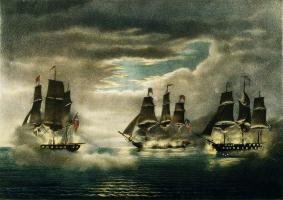
Capture of H.M. Ships Cyane & Levant, by the U.S. Frigate Constitution
David Debias was a free black youth from the north side of Beacon Hill in Boston. In 1814, at only 8 years old, he signed aboard the USS Constitution, nicknamed “Old Ironsides.” He was rated as a ship’s boy and was assigned as a servant to Master’s Mate Nathaniel G. Leighton.
On the night of February 20, 1815, Debias served on USS Constitution during the battle in which Old Ironsides captured HMS Cyane and HMS Levant.
He sailed on board Levant, with Master’s Mate Leighton, as part of the prize crew. Levant was subsequently captured by a British squadron on the way back to the United States and Debias and the rest of the prize crew were imprisoned in Barbados. With the end of the war in May, he returned home and was finally reunited with his family. His father collected $31.98 — the equivalent of roughly $550 today — for his young son’s seven months of service.
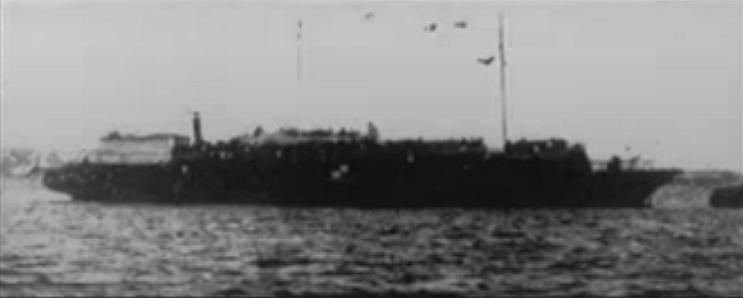 Eighty-one years ago today on February 24, 1941, the overloaded and unseaworthy MV Struma was sunk with the loss of almost 800 Jewish refugees. Of the estimated 790 people who died, more than 100 were children. There was only one survivor.
Eighty-one years ago today on February 24, 1941, the overloaded and unseaworthy MV Struma was sunk with the loss of almost 800 Jewish refugees. Of the estimated 790 people who died, more than 100 were children. There was only one survivor.
The Romanian port of Constanta, on the Black Sea, was a major embarkation point for Jewish refugees attempting to leave Nazi-occupied Europe for Palestine. Thousands of Jews, desperate to escape the Germans, took the route by ship from Constanta via Turkey to Palestine, despite British immigration restrictions.
In December 1941, in Constanta, 781 Jewish refugees boarded the MV Struma. They planned to travel to Istanbul in Turkey, apply for visas to Palestine, and then sail to Palestine.
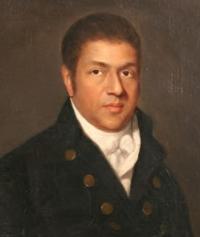 During Black History Month, it is worthwhile to remember early African-American shipmasters. Who was the first? That is hard to say. Paul Cuffee is a good candidate. An updated repost.
During Black History Month, it is worthwhile to remember early African-American shipmasters. Who was the first? That is hard to say. Paul Cuffee is a good candidate. An updated repost.
Paul Cuffee was born on Cuttyhunk Island, MA on January 17, 1759, the seventh of ten children of Kofi or Cuffee Slocum and Ruth Moses. His father, a freed black man, was a member of the Ashanti people of Ghana. His mother was a Native American of the Wampanoag Nation of Martha’s Vineyard. Cuffee Slocum was a skilled carpenter, farmer, and fisherman, who taught himself to read and write. In 1766, Cuffee Slocum was able to purchase a 116-acre farm in Westport, Massachusetts.
Paul Cuffee went to sea at 16 on whalers and merchant ships, where he learned navigation. During the American Revolution, his ship was captured by the British and Cuffee was imprisoned for three months in 1776 in New York. He returned home to Massachusetts and in 1779 built an open boat that he used to run the British blockade, bringing trade goods to Nantucket and ports on the Massachusetts coast.
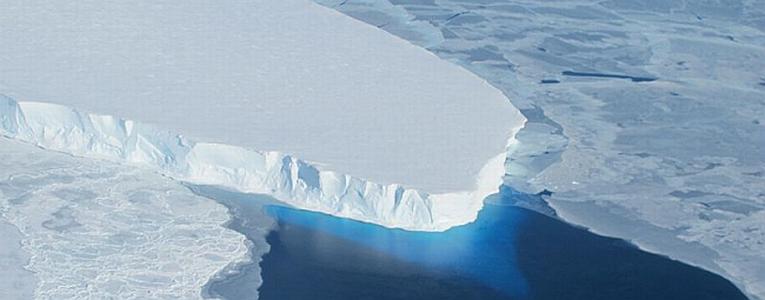
The calving front of Thwaites Ice Shelf in 2012. Photo by JamesYungel | NASA IceBridge.
The continued rapid melting of Antarctica’s Thwaites glacier is worrying, at the very least. The glacier was dubbed “The Doomsday Glacier” by an article in Rolling Stone magazine in 2017. At 80 miles across, Thwaites is the widest glacier in the world—roughly the size of Florida. Every year, it loses 50 billion tons of ice, contributing around 4 percent of annual global sea level rise. If the entire glacier were to melt, it would raise the ocean by 25 inches.
Last September, we saw a blizzard of scary headlines announcing that the doomsday glacier was “holding on by its fingernails,” inspired by a statement by the British Antarctic Survey’s Robert Larter, who said, “Thwaites is really holding on today by its fingernails, and we should expect to see big changes over small time scales in the future — even from one year to the next — once the glacier retreats beyond a shallow ridge in its bed.”
This month, new research by the British Antarctic Survey and the US Antarctic program concluded that Antarctic glaciers may be more sensitive to changes in sea temperature than was thought. The new research suggests that even low amounts of melting can potentially push a glacier further along the path toward eventual disappearance.
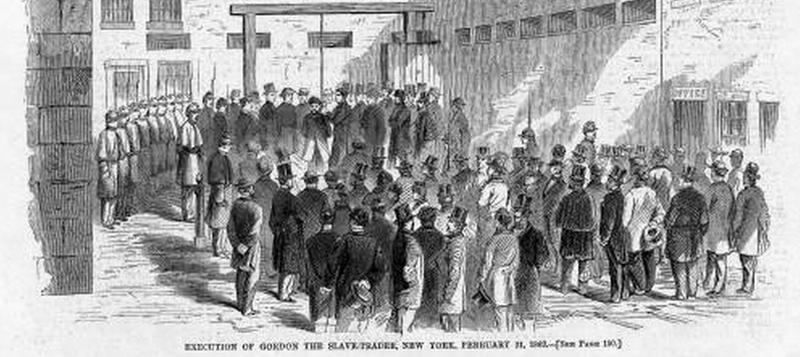 On February 21, 1862, Nathaniel Gordon, captain of the slave ship, Erie, was executed by hanging in New York City. Under the Piracy Law of 1820, slave trading was considered to be an act of piracy punishable by death. He was the only slave-trader ever to be tried, convicted, and executed in American history. Captain Gordon, originally from Portland, Maine was 36. In a detestable trade, Captain Gordan was among the worst. When he was apprehended by the USS Mohican 50 miles off the Congo in 1860, the Erie, a ship of 500 tons, had 897 Africans crammed aboard. Of these, 563 were children. Captain Gordan preferred children because they were smaller and were less able to attempt to take over the ship.
On February 21, 1862, Nathaniel Gordon, captain of the slave ship, Erie, was executed by hanging in New York City. Under the Piracy Law of 1820, slave trading was considered to be an act of piracy punishable by death. He was the only slave-trader ever to be tried, convicted, and executed in American history. Captain Gordon, originally from Portland, Maine was 36. In a detestable trade, Captain Gordan was among the worst. When he was apprehended by the USS Mohican 50 miles off the Congo in 1860, the Erie, a ship of 500 tons, had 897 Africans crammed aboard. Of these, 563 were children. Captain Gordan preferred children because they were smaller and were less able to attempt to take over the ship.

Nantucket Camel Ride
In the United States, today is “Presidents’ Day,” a national holiday on the third Monday of February, falling between Lincoln’s (February 12th) and Washington’s (February 22) birthdays. Here is an updated repost of the tale of a patent granted to Abraham Lincoln for a device to lift boats and ships over sandbars.
In the early 1800s, the entrance to the harbor of the great whaling port of Nantucket had shoaled in. Fully loaded whaling ships could not cross the bar and return to the docks beyond Brandt Point. For years the ships anchored offshore and were lightered, the barrels of whale oil loaded into smaller boats that could make it across the bar.
Here is a short documentary about the construction of the pinnace Virginia, Maine’s First Ship, as told through interviews with former and current volunteers.

